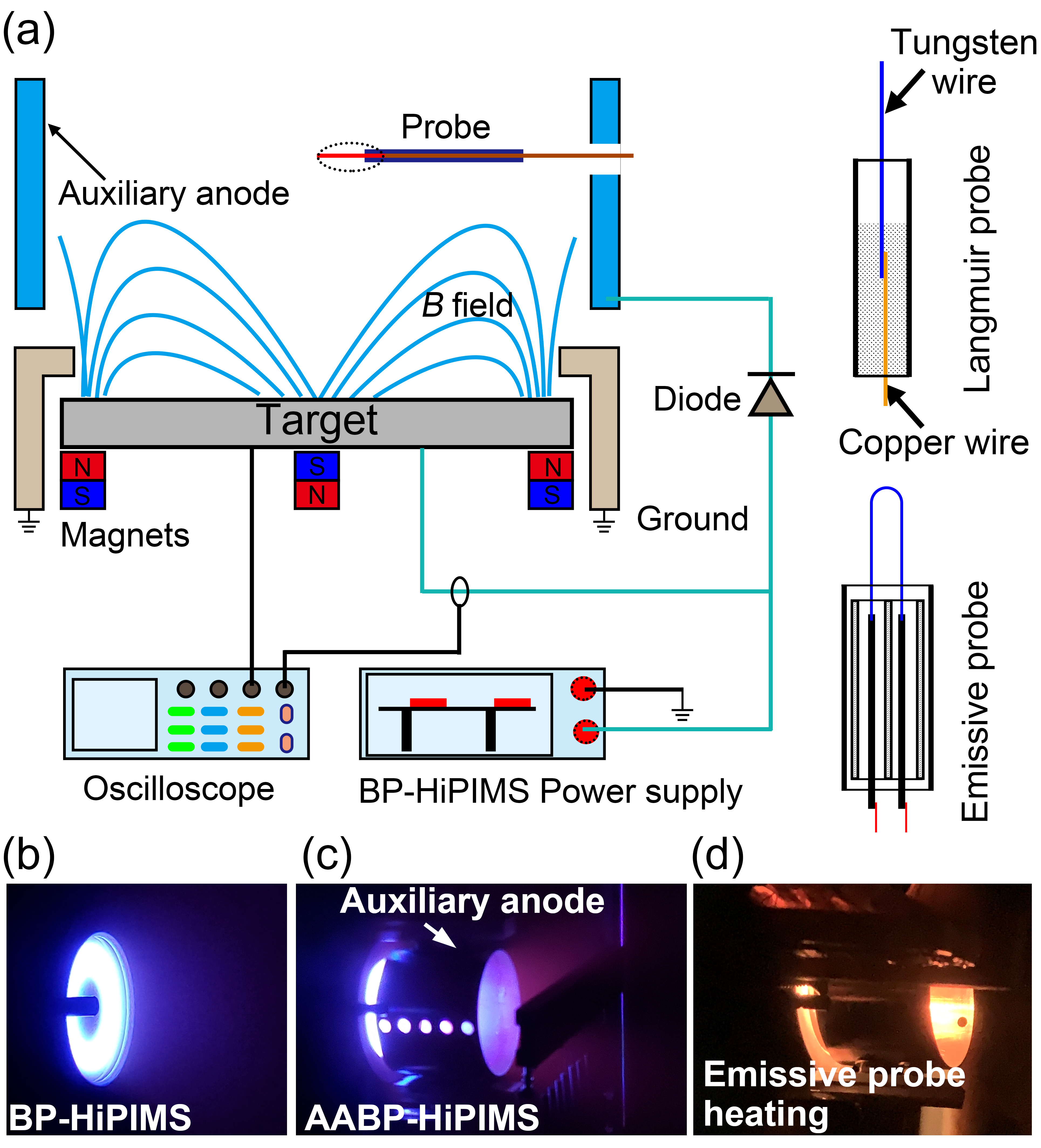
Affiliation of Author(s): Beihang University
Journal: Plasma Sources Science and Technology
Place of Publication: IOP
Key Words: bipolar pulse HiPIMS, auxiliary anode, Langmuir probe diagnostics, emissive probe diagnostics, ion diffusion
Abstract: Investigating plasma dynamics and optimizing target particle diffusion are particularly important and urgent in the recently emerging bipolar pulse high power impulse magnetron sputtering (BP-HiPIMS) discharge. In this paper, a novel approach by installing an external auxiliary anode in front of the sputtering target was proposed to optimize electric field distribution and guide particle diffusion, named as AABP-HiPIMS. A positive pulse voltage was applied to the auxiliary anode synchronizing with target positive pulse voltage, which was achieved by connecting the target and auxiliary anode through a diode in series. Advantageously, no additional power supply needs to be provided in AABP-HiPIMS. The discharge characteristics of this new plasma source was investigated in detail. A theoretical model was successfully built to reveal the transformation process of target current from the net ion current to net electron current on the basis of systematically analyzing the collapsing process of target sheath and charged-particle movement in E×B fields. The optimization in ion diffusion was investigated through diagnosing plasma parameters by Langmuir probe and emissive probe together. The measurements illustrate that, as expected, the electron density in AABP-HiPIMS during positive pulse phase has been effectively increased to ~2.5 times in average of that in the conventional BP-HiPIMS. Correspondingly, the plasma potential distribution illustrates that the potential gradient pointing to the auxiliary anode central is more beneficial to control the ion diffusion and enhance ion flux towards downstream. Additionally, in order to better select the magnetron process parameters, the characteristic time of plasma decay during positive pulse was estimated using the Bohm diffusion theory. The rough calculation of flighting time for electrons from z = 35 to 95 mm was ~70 μs in BP-HiPIMS and ~50 μs in AABP-HiPIMS, respectively. The effects of negative pulse duration and positive pulse amplitude on plasma parameters were investigated. Measurements of plasma potentials suggest that adopting a relatively short duration of negative pulse and a slightly higher amplitude of positive pulse as well as employing the externally applied auxiliary anode are the optimum choices for improving both flux and energy of deposited particles when preparing films on the floating substrate.
First Author: Mingyue Han
Indexed by: Journal paper
Volume: 30
Page Number: 095016
Translation or Not: no
Date of Publication: 2021-07-01

